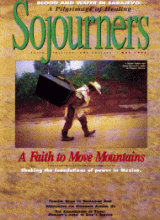Winding our way up through the thick pine trees of the Chiapas highlands and past the military blockades, we arrive in the treasured colonial city of San Cristóbal de las Casas. The main square is awash in fresh blue and white paint, an attempt to hide the black rebel graf- fitti sprayed on public buildings only a month ago. Vege- tarian restaurants, cappuccino bars, and quaint bookstores dot the citys cobblestone streets.
Chiapas feels more like an ideal spot for a honeymoon than the site of a guerrilla war. Indeed, it is both; San Cristóbal typifies the paradox of wealth and poverty that exist back-to-back in the rest of the state.
In early 1992, 400 Mayan Indians from the state of Chiapas marched from Palenque to Mexico Citya six-week, 625-mile walkto petition against land evictions and local government corruption. Upon arriving on the outskirts of Mexico City, they were met with a military blockade to the city center; 100 people were arrested and several were beaten. The Indians turned back, once again frustrated and angry at a government that wouldnt listen.
Two years later their tactics changed. Tzeltal, Tojolabal, and Tzotzil Indian farmers with communities within or around the Lacandón Rain Forest organized with a handful of urban Mexican Latinos to establish a rebel army. The Zapatista National Liberation Army (EZLN) declared civil war the first day of January 1994 in the Chiapas highlands.
Initially, Mexican authorities attempted to crush the uprising and intimidate the population, reminiscent of Central America in the 1980s. About three hours east of San Cristóbal in the small indigenous village of Morelia, the people told us of beatings, torture, and disappearances on January 6.
Read the Full Article

